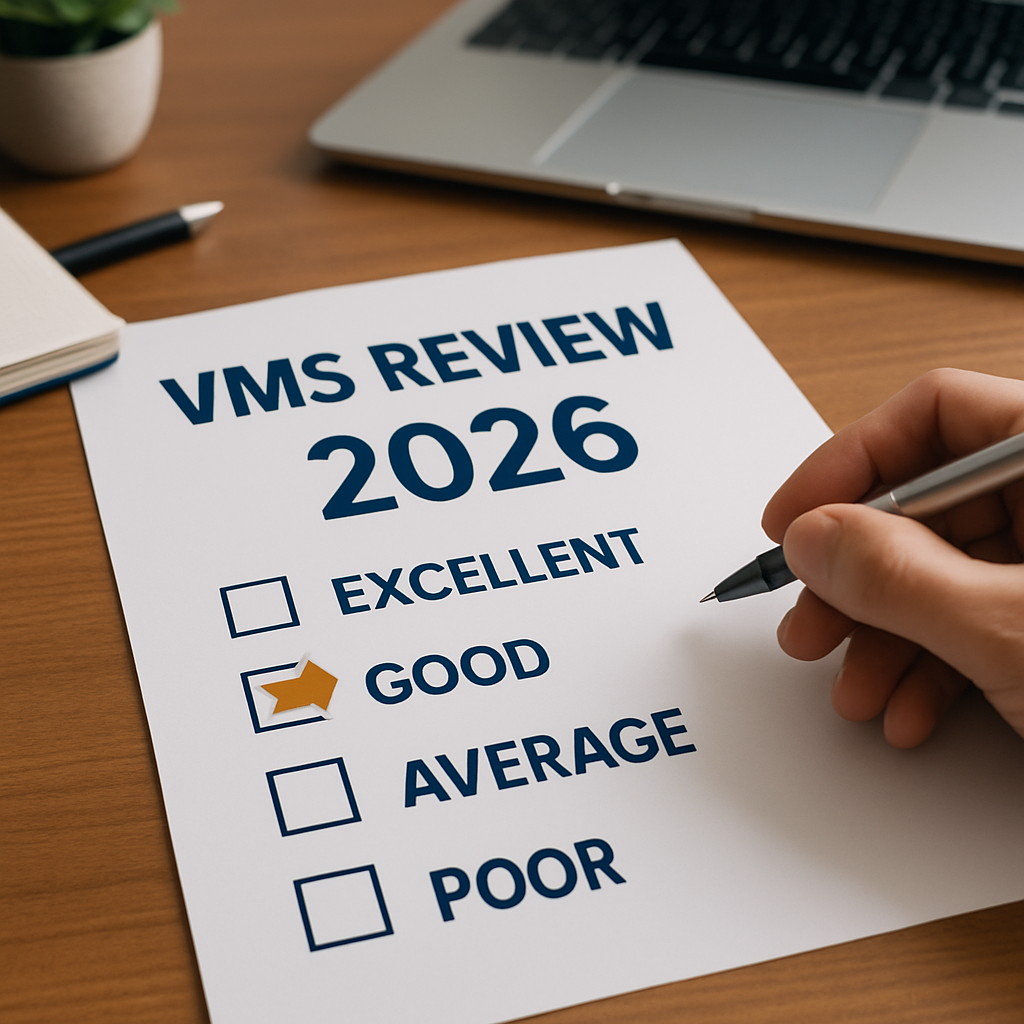Poor visibility leads to risks and costs. Here are five ways a VMS gives you full control over your contingent workforce.
Managing a contingent workforce without the right technology leads to poor visibility, rogue spending, vendor inefficiencies, and compliance risks. To successfully optimize your contingent workforce program, your organization needs access to centralized data, real-time insights, and standardized processes. That’s where a Vendor Management System (VMS) comes in.
A VMS gives organizations the tools to manage the entire contingent workforce lifecycle - from sourcing and onboarding to invoicing, compliance, and performance tracking - all from one centralized platform. This level of visibility is essential for improving decision-making, cost control, and risk management.
In this blog, we’ll explore five powerful ways a VMS improves visibility into your contingent workforce program.
Why Visibility Is Critical to Contingent Workforce Management
Organizations that rely on spreadsheets, internal databases, or HR tools not built for external talent face major challenges in managing contingent labor. Without a centralized system, they lack the transparency and control needed to:
-
Monitor spending
-
Track vendor performance
-
Ensure compliance
-
Standardize rates and processes across the business
This visibility gap often leads to costly mistakes, fragmented data, and inconsistent hiring practices.
How a VMS Enhances Visibility in Your Program
1. Program Cost Transparency
A VMS consolidates all contingent workforce activity into one location, giving your business full visibility into costs. You can:
-
Break down spending by department, role, or vendor
-
Capture and compare staffing agency bill rates and markups
-
Standardize pay rates for similar roles across your organization
-
Enforce rate cards and prevent off-contract spend
This financial clarity helps control budgets and ensures hiring managers adhere to company-wide pricing standards.
2. Staffing Vendor Performance Metrics
Your vendors are central to how quickly and effectively you can hire contingent workers. With a VMS, you can track vendor KPIs like:
-
Time-to-fill
-
Fill rate
-
Turnover rate
-
Quality of hire
These metrics help you evaluate which vendors are meeting expectations and which need improvement, enabling smarter vendor partnerships and better hiring outcomes.
3. Real-Time Spend Tracking
Without a VMS, it’s hard to know how many contingent workers you’ve hired, where they’re placed, or how much they cost. A VMS provides real-time insights into your total program spend and workforce composition, including:
-
Total number of active contingent workers
-
Spend by project, department, or region
-
Invoice and payment status
This visibility enables better forecasting, spend management, and compliance with internal procurement policies.
4. Staffing Agency Adoption and Compliance
Manual management of staffing vendors—using spreadsheets, email threads, or shared drives—leads to inconsistent practices and data loss. A VMS streamlines vendor adoption and ensures:
-
All transactions and documentation are stored centrally
-
Hiring managers work with approved vendors only
-
Pay rates and terms are enforced uniformly
-
Vendor compliance with SLAs and onboarding requirements
With everything in one platform, you’ll have full transparency into agency performance and policy adherence.
5. Workforce Classification and Regulatory Compliance
Misclassifying contingent workers can lead to legal and financial risk. A VMS supports proper classification by:
-
Documenting worker roles and relationships
-
Standardizing onboarding and offboarding processes
-
Ensuring hiring managers follow local and national labor laws
-
Providing audit-ready records of every contingent worker
This minimizes compliance risks and helps your business stay in line with evolving workforce regulations.
Get Full Visibility Into Your Contingent Workforce with Conexis VMS
A lack of visibility can cost your organization in more ways than one—wasted spend, inefficient vendors, and increased compliance risk. A Vendor Management System (VMS) like Conexis VMS gives you the centralized platform and real-time insights you need to build a better contingent workforce program.
Ready to Transform Your Workforce Program?
Contact us today to learn how Conexis VMS can help your organization:
-
Cut costs
-
Improve vendor performance
-
Gain total visibility and control
About Conexis
Conexis is an award-winning Vendor Management System tailored specifically for mid-market contingent workforce programs. Leveraging the latest technology, Conexis delivers the expertise, reliability and security of enterprise systems, while offering the flexibility, user friendliness and tailored service you require. Conexis delivers enterprise level software - without the enterprise level complexity and cost. Learn more about our Company and why organizations Choose Conexis VMS.
Contact Us
Whether you are looking to change your VMS solution, or just getting started, we are here to help. Contact Us for a Free No-Obligation Consultation to discuss your workforce challenges (and get immediate actionable insights). See how easy Conexis is to use by taking a quick 2 minute Self-Guided Tour, or Book a Personal Demo Today!
Additional Information on the Benefits of a VMS:
What is a VMS? | VMS Benefits | Free VMS Education Center | Why Choose Conexis VMS
Cost Savings: How you can save 20% on your contingent workforce costs
Reducing Risk: 5 Ways to reduce contingent workforce risk with a VMS
Co-Employment Risk: How a VMS Shields you from Co-Employment Risk Improving Compliance: 10 Ways a VMS helps improve contingent workforce compliance
Managing Shift-Workers: 5 Ways a VMS helps you manage shift-based workers
Improving Invoicing: 5 Ways a VMS streamlines and improves invoicing
Increasing Visibility: 5 ways a VMS gives you visibility into your contingent workforce program
Measuring Staffing Agency Performance: How a VMS improves staffing agency performance






